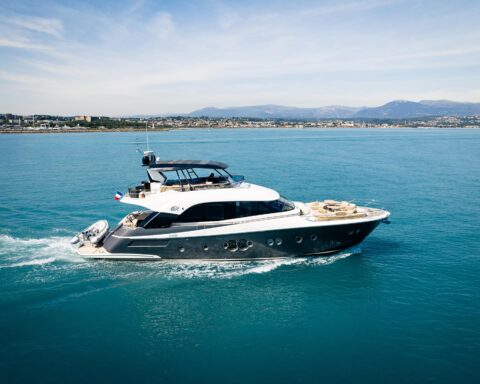The advent of kamikaze drone, also known as loitering munitions, has ushered in a new era in military strategy and warfare. These drones, which are designed to hover around a target area before diving into it and exploding, have proven to be a game-changer in modern combat. Their impact on military strategy is profound, reshaping tactics, operations, and broader strategic considerations. This article delves into how kamikaze drone affect military strategy, examining their development, tactical advantages, operational uses, and strategic implications.
The Evolution of Kamikaze Drones
Kamikaze drones have their roots in earlier forms of guided munitions and unmanned aerial vehicles (UAVs). The concept gained significant attention in the 1980s and 1990s with the development of advanced electronics and guidance systems. The Israeli Harpy, introduced in the early 1990s, is often cited as one of the first true loitering munitions designed to target radar systems. Since then, technological advancements have made these drones more sophisticated, versatile, and accessible.
Modern kamikaze drone vary in size and capability, from small, portable systems like the Switchblade drone used by U.S. forces, to larger, more complex systems like the Iranian Shahed-136, which has been used extensively in conflicts in the Middle East. These drones can carry a range of warheads, from high-explosive to anti-armor, and can be deployed from a variety of platforms, including ground launchers, aircraft, and naval vessels.
Tactical Advantages of Kamikaze Drone
Precision and Accuracy: Kamikaze fixed-wing drones are equipped with advanced guidance systems that allow them to identify and strike specific targets with high precision. This capability reduces collateral damage and increases the effectiveness of strikes against high-value targets.
Cost-Effectiveness: Compared to traditional manned aircraft or larger UAVs, These drones are relatively inexpensive. This cost-effectiveness allows military forces to deploy them in large numbers, overwhelming enemy defenses and saturating target areas.
Reduced Risk to Personnel: By their nature, kamikaze fixed-wing drones are unmanned, meaning there is no risk to human pilots. This reduces the political and psychological cost of losing aircraft in combat and allows for riskier operations that might be too dangerous for manned missions.
Flexibility and Adaptability: These drones can be used in various roles, from targeting enemy air defenses to engaging ground troops and even conducting reconnaissance missions. Their ability to loiter over an area for extended periods allows them to gather intelligence before striking, making them versatile tools on the battlefield.
Operational Uses of Kamikaze Drone
Kamikaze fixed-wing drones have been employed in various conflicts worldwide, demonstrating their operational utility in different contexts.
Suppression of Enemy Air Defenses (SEAD): One of the primary uses of kamikaze UAV drones is to target and destroy enemy air defense systems. By eliminating radar installations and surface-to-air missile sites, these drones pave the way for follow-on strikes by manned and unmanned aircraft.
Counter-Insurgency and Anti-Terror Operations: In asymmetric warfare, where insurgents and terrorist groups often hide among civilian populations, precision strikes are crucial. Kamikaze UAV drones can target insurgent leaders, weapons caches, and vehicle convoys with minimal collateral damage.
Conventional Warfare: In conventional state-on-state conflict, kamikaze drone can be used to disrupt enemy logistics, destroy armored vehicles, and attack command and control centers. Their ability to be launched in large numbers makes them effective against well-defended targets.
Naval Warfare: These drones have also found a role in naval operations. They can be used to target enemy ships, coastal installations, and maritime supply lines. Their small size and maneuverability make them difficult to detect and intercept, posing a significant threat to naval forces.
Strategic Implications
The widespread adoption of kamikaze drone has far-reaching strategic implications, affecting military planning, force structure, and international security dynamics.
Shift in Air Superiority Concepts: Traditional concepts of air superiority, which relied heavily on manned aircraft, are being challenged by the proliferation of kamikaze drone. These drones can bypass conventional air defenses and strike at critical targets, forcing military planners to rethink air defense strategies.
Deterrence and Asymmetric Warfare: For smaller nations and non-state actors, kamikaze fixed-wing drones provide a means of asymmetrical warfare against more powerful adversaries. The relatively low cost and high effectiveness of these drones allow them to pose a credible threat, thereby altering the strategic calculus of larger military powers.
Force Multiplication: Kamikaze drones act as force multipliers, allowing smaller forces to achieve disproportionate effects. By integrating these drones into their arsenals, militaries can enhance their operational capabilities without significantly increasing their manpower or costs.
Proliferation and Arms Control Challenges: The accessibility and affordability of kamikaze UAV drones raise concerns about their proliferation to rogue states and terrorist organizations. Controlling the spread of these technologies poses significant challenges for international arms control regimes.
Case Studies
Nagorno-Karabakh Conflict (2020): During the 2020 conflict between Armenia and Azerbaijan, the Azerbaijani military made extensive use of Israeli-made Harop and Turkish Bayraktar TB2 drones. These drones played a decisive role in destroying Armenian air defenses, artillery, and armored vehicles, showcasing the effectiveness of loitering munitions in modern warfare.
Yemen Civil War: The Houthi rebels in Yemen have used Iranian-supplied kamikaze drones to attack Saudi-led coalition forces and infrastructure. These drones have targeted oil facilities, airports, and military installations, demonstrating the strategic impact of loitering munitions in asymmetric warfare.
Ukraine Conflict: In the ongoing conflict between Ukraine and Russia, both sides have employed kamikaze drones to target each other’s military assets. The use of these drones has highlighted their utility in a high-intensity conflict and their ability to influence the tactical and operational landscape.
Challenges and Countermeasures
Despite their advantages, kamikaze drones also face several challenges and limitations.
Electronic Warfare (EW): Advanced electronic warfare systems can jam or disrupt the guidance and communication systems of kamikaze fixed-wing drones, rendering them ineffective. Developing countermeasures to EW is a critical area of focus for drone manufacturers and military planners.
Counter-Drone Technologies: As the threat of kamikaze drones grows, so does the development of counter-drone technologies. These include directed energy weapons, such as lasers, and kinetic interceptors designed to detect and destroy drones before they can reach their targets.
Limited Payload: The small size of kamikaze drones limits their payload capacity, restricting the types and sizes of warheads they can carry. This limitation makes them less effective against heavily fortified targets or large-scale infrastructure.
Operational Environment: The effectiveness of kamikaze fixed-wing drones can be influenced by environmental factors such as weather, terrain, and electromagnetic interference. Adverse conditions can reduce the accuracy and reliability of these systems.
Future Prospects
The future of kamikaze UAV drones is likely to see continued innovation and increased deployment across various military forces. Several trends are expected to shape their development and use:
Autonomy and AI: Advances in artificial intelligence and machine learning will enable greater autonomy for these drones, allowing them to operate with minimal human intervention. This could lead to swarming tactics, where large numbers of drones operate in coordinated attacks against complex targets.
- Enhanced Stealth and Survivability: Future kamikaze drones may incorporate stealth technologies to reduce their radar signature and increase their survivability against advanced air defense systems.
- Integration with Other Systems: Kamikaze fixed-wing drones will likely be integrated into broader military networks, working alongside other UAVs, manned aircraft, and ground forces to create a cohesive and responsive operational environment.
- Civilian Applications and Risks: The proliferation of drone technology also raises concerns about its use in civilian contexts, both for legitimate purposes such as search and rescue, and for malicious activities including terrorism and criminal activities.
Conclusion
Kamikaze drones represent a significant evolution in military technology, offering new capabilities and challenges for military strategists. Their precision, cost-effectiveness, and versatility make them valuable assets in a wide range of operational scenarios, from conventional warfare to counter-insurgency and anti-terror operations. However, their proliferation also poses strategic and security risks that must be addressed through robust countermeasures and international cooperation. As technology continues to advance, the role of these drones in military strategy will undoubtedly expand, shaping the future of warfare in profound and unpredictable ways.













